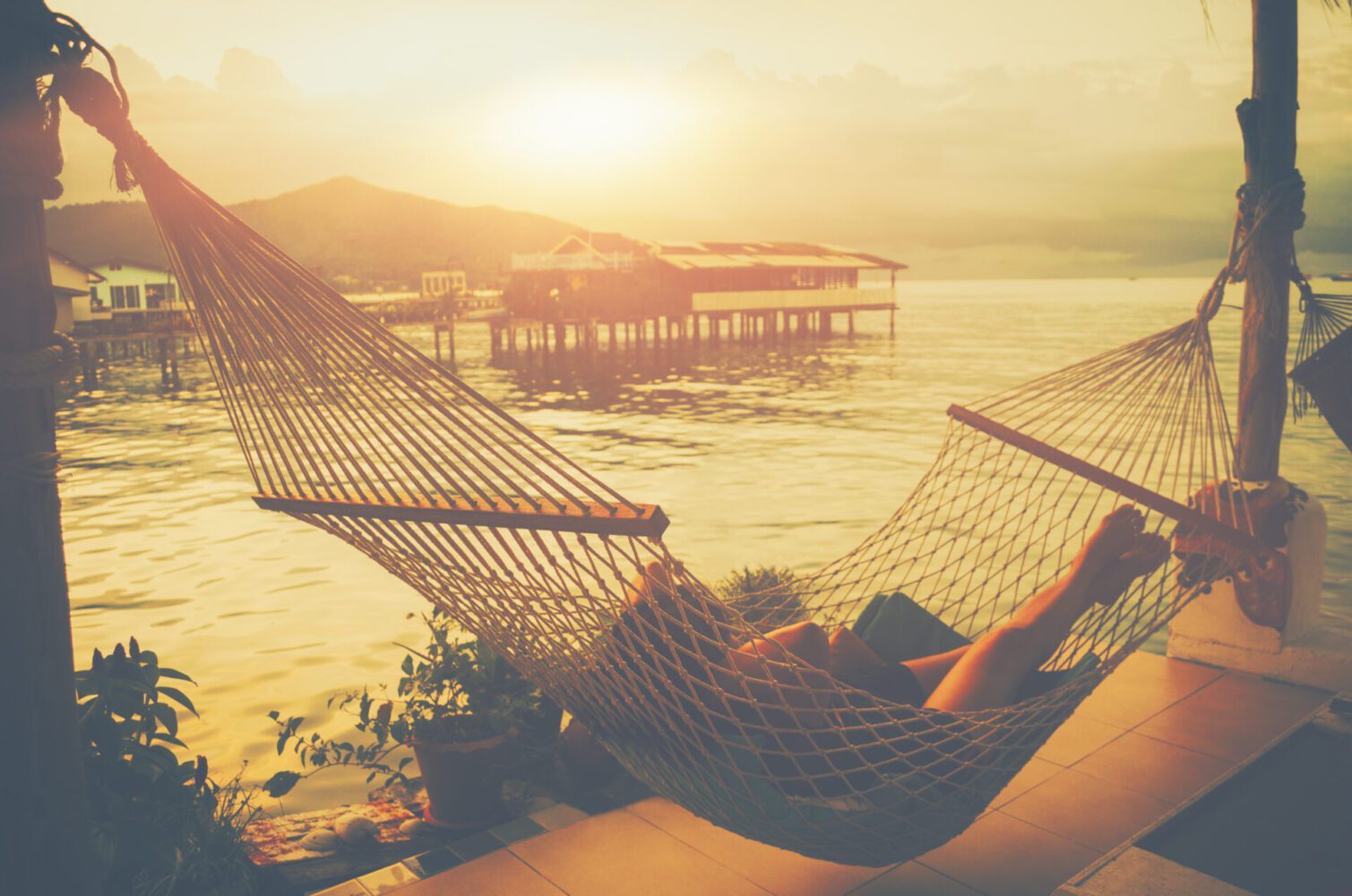
Daylight-saving time has been a bit of a hot topic for a while. When it comes around there’s always the debate about whether we should have it and how much it messes so many of us up! No matter how excited you are for summer or how much you are dreading winter, daylight saving can have a huge effect on your sleep schedule, especially if you have little ones. Young children have a lower tolerance for sleep deprivation than adults, and the change in sleep patterns and timing can affect a child’s attention span, appetite, and overall mood. No matter your age, it is not a nice feeling waking up tired, dull, lacklustre, and unrefreshed for the day ahead. The good news is, there are many ways you can help bring your body back into balance. Here are our top tips to help your body and mind move seamlessly through the daylight-saving challenges, so that you can make the most of it.
Straining your eyes? You can listen to this automated AI version of the article here:
Contents
1. Get outside
When the days get longer OR shorter, make the most of the available sunlight and get outdoors. Our hormones need to get cues from the sun throughout the day no matter what the weather. Our hormones and circadian rhythm need to know what time of day and what season it is. Watching the sunrise triggers a daily hormone cascade, which is essential for optimum health. The balance between melatonin and cortisol is especially influenced by the early morning sunlight. Melatonin is made in our cells with exposure to infrared light from the sun and then more melatonin is released by the pineal gland as darkness falls at night. Melatonin is our body’s sleep hormone, but it is also a powerful antioxidant and supports vitamin D utilisation.
So, sound sleep starts with the sunrise. Keep this basic routine throughout the year by shifting your waking and sleeping times to fit the times that the sun rises NOT the time of day. This means that your circadian rhythm will not panic when the clocks are set back or forward at the change of daylight saving. This may be challenging for those with set times for jobs, etc., so look to #2 on this list, “Control the light”, for tips on how to limit bright light when it is dark.
With children, it is important to create a routine that will help them to get to sleep, which should carry them into a healthy adulthood. Take them for a bike ride or a walk in the evening; this will balance their mood, so that they will be happier going to bed. Involve them in the sunrise and sunset watching to support their hormones as they grow and develop.
Additionally, at least 30 minutes of sun exposure is recommended in New Zealand, this should be later afternoon or early morning when the summer sunshine is less intense. In the winter, this can be any time of day. The infrared and UVA light are especially important to be exposed to. Your exposure time depends on how sensitive your skin is to sunlight, but in the summer the early morning sunlight can make your skin more resilient to midday sunlight and late afternoon sunlight supports skin recovery! In the warmer months, sunlight is, of course, a source of vitamin D – a natural mood, sleep, immune, and bone support! It is thought that 27 percent of people are below recommended blood level of Vitamin D. Some health issues increase the need for Vitamin D. Only UVB light can trigger the conversion of D3, and it is only present in the middle part of the day. An app like D-Minder can help you find the appropriate time for safe sun exposure and vitamin D production.
Exposure to natural light does not mean you have to sit under the hot sun and burn. Even being in the shade, you will be getting signals from the light bouncing around the place, especially in through your eyes.
2. Control the light
This follows on from #1…Getting outside as much as you can during the day is all very well but what do you do at night, when all the artificial lights are on?
Melatonin increases as the sun goes down, inducing sleep, and decreases as the sun rises and cortisol levels go up, which “wakes” us up. It is important to avoid bright light and blue light after sunset or before sunrise, if you have to get up early for work or school. You can use orange bulbs, candles, blue light blocking glasses, and avoid devices and TV. This becomes all the more important in the winter, when darkness hours are longest.
In the summer it can be confusing for children when we ask them to go to bed when the sun is still up, especially as their melatonin levels are likely not at optimal levels. To help melatonin increase naturally, ask them to help pull all the curtains around the areas they spend time in before bed, and turn a dim, orange light on in these areas. Ensure that all electronics and devices are off an hour before bed, as the blue light exposure, as well as the brain stimulation from what they’re watching, can reduce melatonin. In the morning, ensure children get natural light around sunrise; have breakfast outside, go for a walk around the block before school, or simply ensure curtains and windows are opened, as soon as they wake up. Window glass blocks the essential full spectrum light from the sun.
3. Look to magnesium for extra support
Magnesium nourishes the nervous system and supports relaxation, helping melatonin support healthy sleep/wake cycles in the body. As the modern, ultra-processed diet is often deficient in magnesium, it is important that we focus on eating whole foods and magnesium-rich foods or supplement the diet. Great food sources of magnesium include whole milk products, fish, shellfish, and poultry. Even red meat has a good amount of bioavailable magnesium. Ensure your family is having a variety of these foods throughout the day, and especially in the evening, to help induce sleep. Some of the highest dietary sources of magnesium are from nuts and seeds, particularly almonds, hazelnuts, brazil nuts, cashew nuts and pumpkin seeds; however, the minerals in plant seeds – nuts, seeds, beans, and grains, are bound to compounds that prevent the seed from germinating too early, and so are less available to human digestion and absorption. Soaking and activating can mitigate this but it is best not to rely on the seeds of plants for all of your minerals.
4. Use herbal remedies
Passionflower, California poppy, Chamomile, Lemon balm and Lavender, are some of the herbs we can use to support sleep. These herbs can be used throughout the day without causing drowsiness; but will help at sleepytime, and support children to stay asleep throughout the night. Take as a supplement or use fresh or dried herbs in a tea. Lavender essential oil can be sprayed on pillows or used in a bath to help relax the body and the mind before bed
Daylight saving does not go without a few days of transition. In the first few days, try to be more forgiving as it is likely children will be over tired and frustrated. Understanding that this is temporary will help them to adjust better. The main thing to keep in mind is that a good bedtime routine, ensures that little children get plenty of shut eye, even if this means they have longer naps during the day. And just as children have a hard time adjusting adults do too, so don’t forget to look after yourself! All these tips can be applied to mum and dad alike, so practice them with your children and help the whole family adjust, seamlessly.
FAQs
How does daylight-saving time affect sleep patterns and overall health?
Daylight-saving time can disrupt sleep patterns by altering the body’s natural circadian rhythm, leading to difficulties in falling asleep or waking up. This disruption can result in sleep deprivation, fatigue, and an increased risk of accidents and health issues.
How can magnesium help support healthy sleep/wake cycles?
Magnesium plays a crucial role in supporting healthy sleep/wake cycles. It supports the nervous system, allowing for better relaxation and supporting sleep. Additionally, magnesium deficiency is associated with sleep problems, so ensuring an adequate intake of magnesium can support better sleep quality and overall sleep health.
TAPSPP1503

